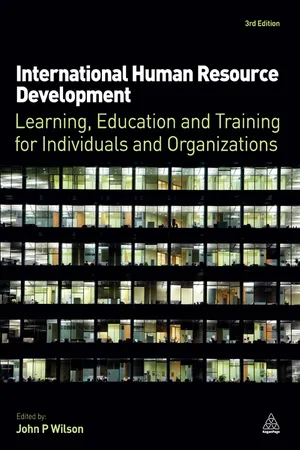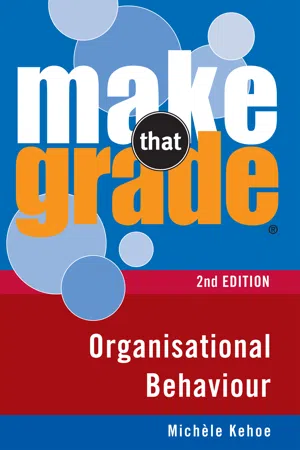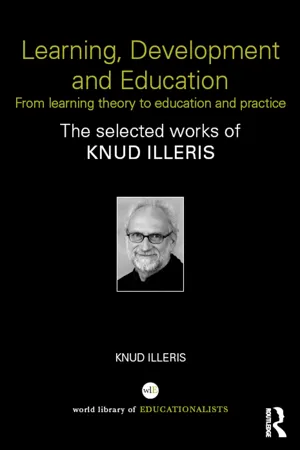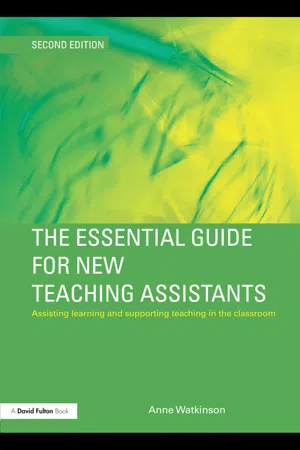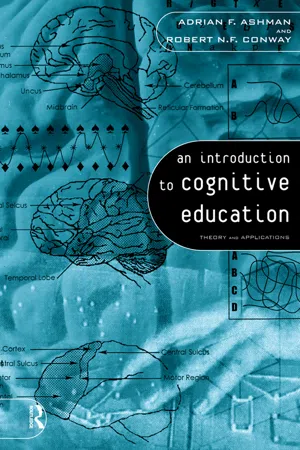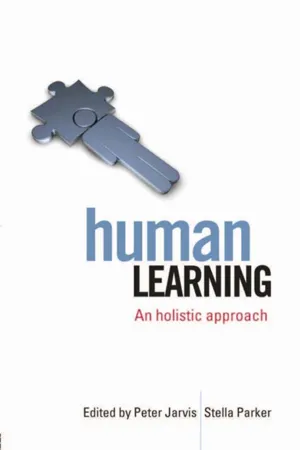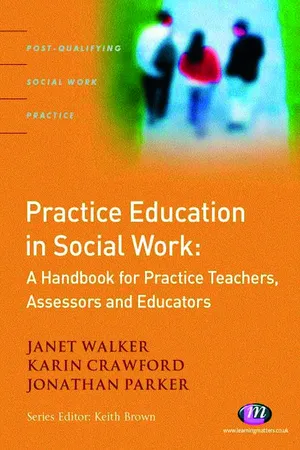Psychology
Learning
Learning refers to the process of acquiring new knowledge, behaviors, or skills through experience, study, or instruction. It involves the modification of existing knowledge and the development of new understandings. Learning can occur through various methods such as observation, practice, and reinforcement, and it is a fundamental aspect of human cognition and behavior.
Written by Perlego with AI-assistance
Related key terms
10 Key excerpts on "Learning"
- eBook - ePub
International Human Resource Development
Learning, Education and Training for Individuals and Organizations
- John P. Wilson(Author)
- 2012(Publication Date)
- Kogan Page(Publisher)
Developing insights into how people learn and which approaches are more effective will benefit both learners and providers in education, training and development. Therefore, this chapter will consider Learning from six main perspectives: behaviourism, cognitivism, constructivism, social Learning, humanism and cognitive science. It should be noted from the beginning, however, that Learning is complex and these areas not only tend to overlap, but their abilities to explain Learning differ (Bruner, 1985).Defining Learning
It is generally helpful to have a definition of a subject in order to understand its nature and boundaries; unfortunately, no single definition provides a complete insight into Learning. Indeed, Jarvis (2004: 1) stated, ‘Human Learning is the preserve of no single discipline; definitions that fail to recognise it are incorrect.’ Therefore, it is perhaps more useful to provide a range of Learning definitions to illustrate different views about a wide and complex subject:An individual may be said to have learned when his behaviours after the Learning occasion remain significantly different from his behaviour before. (Revans, 1971: 100) Learning is the process whereby knowledge is created through the transformation of experience. (Kolb, 1984: 38) The process of using a prior interpretation to construe a new or revised interpretation of the meaning of one’s experience as a guide for future action. (Mezirow, 2000: 5)The combination of processes whereby the whole person – body (genetic, physical and biological) and mind (knowledge, skills, attitudes, values, emotions, beliefs and senses) – is in a social situation and constructs an experience which is then transformed cognitively, emotively or practically (or through any combination) and integrated into the individual’s own biography.(Jarvis, 2004: 7) The process of Learning has generally been understood to be the process through which individuals go in acquiring their knowledge, skills, attitudes, values, beliefs, emotions and senses. (Jarvis, Holford and Griffin, 2004: 4)Learning is a relatively permanent change in behaviour or in behavioural potentiality that results from experience and cannot be attributed to temporary body states such as those induced by illness, fatigue, or drugs.(Hergenhahn and Olson, 2005: 8) Any process that in living organisms leads to permanent capacity change and which is not solely due to biological maturation or ageing. - eBook - ePub
- Vivienne Walkup(Author)
- 2013(Publication Date)
- Routledge(Publisher)
engagement with their environment. Learning is gained; it is not simply change over time. This distinguishes it from biological or developmental change such as cutting teeth or one’s hair turning grey. This chapter looks at ways in which psychology can inform our understanding of Learning, and will look at some theoretical accounts of Learning and consider their relevance within educational contexts.However, before we move on to these accounts, let us consider some of the bigger underlying questions about Learning, such as why people learn and why we put ourselves through the process of education. There are a number of different explanations about Learning including the view that it is a survival mechanism which allows humans to adapt to and survive within different changing environments. At a micro level this involves the genetic structure of the brain and ways in which brain cells and connections flourish or die depending upon the ways in which they are needed within specific environmental conditions. Looking at Learning and the whole person, Piaget’s work initially with simple organisms (molluscs) which were able to adapt to different conditions caused him to ponder about human development. His subsequent studies which looked at the ways in which children’s thinking changed as they matured is rooted in this view but also acknowledges the importance of experience as an integral part of that development. Behaviourists explain Learning as a response to stimuli and so place the emphasis much more squarely on the environment. They argue that actions which are rewarded are more likely to be repeated (learned) so that the individual develops a repertoire of learned behaviours. Humanists, such as Maslow (1968, 1970) and Rogers (1969), take a different view, suggesting that Learning is something people do in order to satisfy their needs for self-fulfilment or self-actualisation. Many current explanations assume a combination of factors but current focus is upon ways in which humans process information (information-processing approaches - eBook - ePub
- Michele Kehoe(Author)
- 2013(Publication Date)
- Gill Books(Publisher)
4LearningObjectives This chapter will help you to:- Understand the nature of Learning.
- Describe the behaviourist approach to Learning.
- Explain the cognitive approach to Learning.
- Identify social Learning theory.
- Describe the structure of human memory.
- Apply methods of improving memory.
Learning occurs at all levels of the organisation – individual, group and the organisation itself. It is fundamental to the success of an organisation that an understanding is gained of how and why individuals learn and of how the organisation can facilitate continuous Learning. Learning theories provide an insight into individual differences and management practices. This knowledge affects the design and delivery of induction and job training programmes, the design of reward systems and the provision of feedback to employees. It contributes to the successful management of organisational change and the creation of Learning organisations.According to Buchanan and Huczynski (2010), ‘Learning is the process of acquiring knowledge through experience which leads to a lasting change in behaviour’.Moorhead and Griffin (2012) state that Learning can be defined as ‘a relatively permanent change in behaviour or behavioural potential resulting from direct or indirect experience’.The main characteristics of Learning include:- Learning involves change – This may affect the way individuals think, feel and behave. People may or may not be aware of these changes.
- Change may be positive or negative
- eBook - ePub
How We Learn
Learning and non-learning in school and beyond
- Knud Illeris(Author)
- 2016(Publication Date)
- Routledge(Publisher)
Chapter 2 The basis of the understanding of LearningChapter 2 deals with the different matters forming the basis of the understanding of Learning in this book. These are the basic psychological, biological, brain and sociological conditions of Learning. It is emphasised that all these areas and their interaction must be involved in a comprehensive understanding of Learning.2.1 The various sources of the understanding of LearningThe broad understanding and definition of Learning outlined in Chapter 1 means that many different sources must be taken into consideration if the whole complexity of human Learning is to be understood.Learning has traditionally been understood first and foremost as a psychological matter, and Learning psychology is one of the most classical disciplines of psychology. But other psychological disciplines must also be involved, such as developmental psychology, cognitive psychology, personality psychology and social psychology. In relation to educational psychology it is important to maintain that Learningpsychology deals with what happens with the learner, whereas educational psychology is about what others can do to promote or influence the Learning process and especially the organisation of teaching and education. In practice there is, however, a considerable overlap, which mainly means that good educational psychology of necessity must relate to Learning psychological insight with special reference to educational organisation. On the other hand, Learning psychology must often relate to which kind of Learning various influences and kinds of teaching can contribute to, but this does not directly involve the basic structures which are the core area.In recent years, however, understanding of Learning has also been taken up to a considerable extent quite outside of what we traditionally understand as psychology. This has taken place, on the one hand, on a biological basis in connection with understanding the various functions of the body, and especially during the later decades Learning has become a central topic of advanced brain research. On the other hand, on a social science basis, first and foremost in the grey area between sociology and social psychology, but also socially more broadly and right into national economy, this applies, for example, to measures to strengthen the Learning in certain groups and occupations with a view to economic growth and competitiveness. - eBook - ePub
- Janice Dexter, Graham Dexter, Judy Irving(Authors)
- 2010(Publication Date)
- SAGE Publications Ltd(Publisher)
entirely on Learning and unLearning. Other theories that influence the development of coaching help to identify what conditions might be necessary for change to take place, and a myriad of approaches and ideas for applied techniques. Understanding Learning theories is essential to ensure that a change does take place within those other contexts and approaches. It is one of the most exciting aspects of knowledge that a coach can develop.Without Learning, ‘behaviour’, which includes our ways of thinking, producing feelings, practising skills, holding attitudes and adhering to beliefs, does not change. So does that mean that a coach is a teacher? It is probably more correct to say that coachees will learn things from their coach. But yes, we would argue that effective coaches do need to take a didactic approach at some points in the process, and the more they know about Learning and how to help people learn, the more likely they are to be successful.So what do we mean by Learning? Knowles et al. (2005: 11) offer a definition that is widely accepted: that Learning is ‘the extension and clarification of meaning of one’s experience’. To be clearer, we might indicate that this means the very act, process or experience of gaining knowledge or a skill. In general terms, we might also accept that Learning is knowledge or skill gained through schooling or study. This does not always have to be intentional: a lot of our Learning has occurred at an unconscious level. We have had experiences that have ‘taught’ us what to do and not to do in certain situations. Sometimes we have learned through being embarrassed, frightened or curious, which we might say are emotional motivators. Other situations have been extremely rewarding and in these situations we find that the Learning has ‘stuck’.A psychological definition of Learning may move towards the expectation of a behavioural modification that is engendered through experience or conditioning. This is completely congruent to our view and, as coaches, we understand that the change we seek to engender is a ‘relatively permanent change’, not some superficial change that is easily reversed. On the other hand, coaches know that in a lot of situations the first change that may be required is to ‘unlearn’ something, especially some of the beliefs or ideas that relate to our sense of self. Once unhelpful beliefs are challenged, people can begin to develop that relatively permanent change in behaviour, which we take to include different types of cognition, such as imagery, memory and patterns of thinking. - eBook - ePub
Learning, Development and Education
From learning theory to education and practice
- Knud Illeris(Author)
- 2018(Publication Date)
- Routledge(Publisher)
Since the last decades of the nineteenth century, many theories and understandings of Learning have been launched. They have had different angles, different epistemological platforms and a very different content. Some of them have been overtaken by new knowledge and new standards, but in general we have today a picture of a great variety of Learning theoretical approaches and constructions, which are more-or-less compatible and more-or-less competitive on the global academic market. The basic idea of the approach to Learning presented in this chapter is to build on a wide selection of the best of these constructions, add new insights and perspectives and in this way develop an overall understanding or framework, which can offer a general and up-to-date overview of the field.Learning can broadly be defined as any process that in living organisms leads to permanent capacity change and which is not solely due to biological maturation or ageing (Illeris 2007, p. 3 ). I have deliberately chosen this very open formulation because the concept of Learning includes a very extensive and complicated set of processes, and a comprehensive understanding is not only a matter of the nature of the Learning process itself. It must also include all the conditions that influence and are influenced by this process. Figure 1.1 shows the main areas which are involved and the structure of their mutual connections.Figure 1.1 The main areas of the understanding of Learning.On the top I have placed the basis of the Learning theory, i.e. the areas of knowledge and understanding which, in my opinion, must underlie the development of a comprehensive and coherent theory construction. These include all the psychological, biological and social conditions which are involved in any Learning. Under this is the central box depicting Learning itself, including its processes and dimensions, different Learning types and Learning barriers, which to me are the central elements of the understanding of Learning. Further there are the specific internal and external conditions which are not only influencing but also directly involved in Learning. And finally, the possible applications of Learning are also involved. I shall now go through these five areas and emphasise some of the most important features of each of them. - eBook - ePub
The Essential Guide for New Teaching Assistants
Assisting Learning and Supporting Teaching in the Classroom
- Anne Watkinson(Author)
- 2010(Publication Date)
- Routledge(Publisher)
Did anything you did or learnt relate to anything else in your life? Have you finished? If not, will it finish? What would you change now with hindsight?It is possible to draw up a set of principles with help from this exercise and lists like these. You will notice:Learning is not a straightforward process. It has ups and downs, and even goes backwards at times.People can help and hinder.Another person who has more experience of the same area usually is helpful – this may be a teacher or a course tutor but does not have to be.Other life experiences always help somewhere.Correct tools or words or strategies usually help.Time and timing is important, as are challenge and motivation.Most learners experience fear and anxiety as well as satisfaction.Attitudes to Learning are important.Learning rarely finishes, even in a restricted area, even if the course itself does.We go on Learning all our lives.Trying to define Learning is hard in itself. The dictionary puts the emphasis on getting more knowledge, but Learning is not just about acquiring facts. One quite useful definition is: ‘Learning … that reflective activity which enables the learner to draw upon previous experience, to understand and evaluate the present, so as to shape future action and formulate new knowledge’ (Abbott 1996: 1. One problem is that Learning itself cannot be seen, only the behaviour that happens after it has taken place. There are the heart-stopping moments of seeing the ‘penny drop’, but these do not constitute all that is going on; most of it you cannot see. Figure 4.1 illustrates the process of Learning and some of the factors that surround it. The rest of the chapter gives you further details about each of the boxes in the diagram.FIGURE 4.1 The process of Learning1 The brain
Learning is a process of change taking place in the brain. (Human beings are animals with highly developed brains.)The inherited Learning tools
The brain is made up ofbillions of cells, (neurones). The total length of its ‘wiring’ between the neurones is about 100,000 kilometres (62,150 miles) … the memory capability could be compared to 1000 CD ROMs each one containing an Encarta encyclopaedia … the layers of organisation within the brain that act together apparently miraculously, … handle not only memory but also vision, Learning, emotion and consciousness. - eBook - ePub
An Introduction to Cognitive Education
Theory and Applications
- Adrian Ashman, Robert Conway(Authors)
- 2002(Publication Date)
- Routledge(Publisher)
Chapter 2Developing models of cognition
In the introduction to a book of readings on curriculum and Learning, V. Lee (1990: 1) reflected on the constantly changing approach to teaching in schools: ‘Ideas that seem elegant to one generation seem less compelling to the next’.To understand the reasons for the current orientation to the study of thinking and Learning, it is important to have an appreciation of the two major traditions that have influenced instructional theory and practice. The first, behaviourism, began in the early years of the twentieth century in Russia and the United States and dominated American psychology until the middle of the 1960s. While much behavioural research focused on animal Learning, behaviourism spread its influence into education and was advocated as a means of understanding the nature of human Learning. Behaviourism also provided teaching techniques that led to marked changes in students’ academic performance.The study of human Learning was also influenced by a second tradition that coexisted with behaviourism, namely, human memory. Memory research began in the late 1800s and has led to an understanding of the complex mental processes that constitute the fabric of human cognition.In the first section of this chapter, we introduce the concepts associated with behaviourism and the adaptations that occurred when that view of human behaviour was thought to be an oversimplification. In the second half of the chapter, we explore memory, memory research, and the origin of the field called cognitive education.A BEHAVIOURAL FRAMEWORK FOR Learning
The behavioural approach to teaching has played a crucial role in the education process since the mid-1960s, most particularly in special education, but also in regular education. Although many teachers and parents have seen its application in the management of social behaviours – often called behaviour management – it has also had a major influence on the teaching of academic skills. The impact on social behaviour, including discipline, will be examined in Chapter 9 - eBook - ePub
Human Learning
An Holistic Approach
- Peter Jarvis, Stella Parker(Authors)
- 2006(Publication Date)
- Routledge(Publisher)
Chapter 6
A comprehensive understanding of human Learning
Knud Illeris
Since the middle of the nineteenth century many theories and understand- ings of how human Learning takes place have been launched. They have had different angles, different epistemological platforms, and a very different contents. Some of them have been overtaken by new knowledge and new standards, but in general we have today a picture of a great variety of Learning theoretical approaches and constructions, which are more or less compatible and more or less competing on the global academic market.The aim of this chapter is to try to unite a wide selection of the best of these constructions into an overall understanding or framework which can give a general overview of the field and at the same time point out where the different contributions are situated in the field and how they relate to each other.The understanding presented is based on two fundamental assumptions: first, that all Learning includes two essentially different types of process, namely an external interaction process between the learner and his or her social, cultural and material environment, and an internal psychological process of acquisition and elaboration in which new impulses are connected with the results of prior Learning. Second, that all Learning includes three dimensions, namely the cognitive dimension of knowledge and skills, the emotional dimension of feelings and motivation, and the social dimension of communication and cooperation – all of which are embedded in a soci- etally situated context. In addition, the approach specifies four types of Learning and deals with what happens when intended Learning does not occur.The development of this understanding is described in detail in my book, The Three Dimensions of Learning , which was published in Danish in 1999 and in English in 2002 (Illeris 2002). This chapter is an elaborated version of an article in the International Journal of Lifelong Education - eBook - ePub
Practice Education in Social Work
A Handbook for Practice Teachers, Assessors and Educators
- Janet Walker, Karin Crawford, Jonathan Parker(Authors)
- 2008(Publication Date)
- Learning Matters(Publisher)
With two main sections, your reading in this chapter will start by considering how individual students learn in the practice education context. Thus, for example, this section will include exploration of adult Learning theories, different approaches to Learning and consideration of the concepts of student-centred Learning and the development of knowledge, skills and professional values. The second section of the chapter moves on to look at your role, as a practice educator, in facilitating and enabling student Learning. In this part of the chapter your Learning from the earlier part of the chapter will be built upon to consider ways in which you can stimulate the development of the Learning process, through for example planning Learning, agreeing Learning opportunities and activities, and monitoring the progression of Learning. As is reflective of all professional practice, the student and practice educator do not, cannot and should not work or learn in isolation. Therefore, the discussion will widen to consider how other factors influence and can support Learning; for example, the physical environment, the organisational context and the involvement of others, including service users, other practitioners and inter-professional, multi-agency working. Throughout the chapter, the relationship between the Learning of ‘theory’ (academic context of Learning) and work-based Learning as a holistic process will be explored as a critical theme for effective Learning, with critical reflection as the key capability of the practitioner in enabling this process.How does the individual student learn?
The answer to this question, if indeed there is one answer, could take a whole book or perhaps a series of books to address. So in this small part of this one chapter, we intend to introduce you to some key ideas, theories and principles that might prompt and direct your further studies on Learning in practice.Learning takes place in many different ways and at different levels. So for example, you might learn your mobile telephone number, which is really memorising. Or you may have some new ideas, reflections or thoughts about an event or incident which then changes the way you perceive it or they way you might tackle something similar again. In this way you are fitting your new Learning with existing ideas to deepen your knowledge and understanding . There are some significant terms in this paragraph, all of which may reveal contested or complex definitions. We shall explore knowledge and understanding further as the chapter progresses. What is clear, though, is that in the context of enhancing ourselves as professionals, studying formally and informally, our pattern of Learning, skills and knowledge acquisition most commonly takes place in a continuous spiral of further development. This is illustrated in Figure 2.1
Learn about this page
Index pages curate the most relevant extracts from our library of academic textbooks. They’ve been created using an in-house natural language model (NLM), each adding context and meaning to key research topics.
